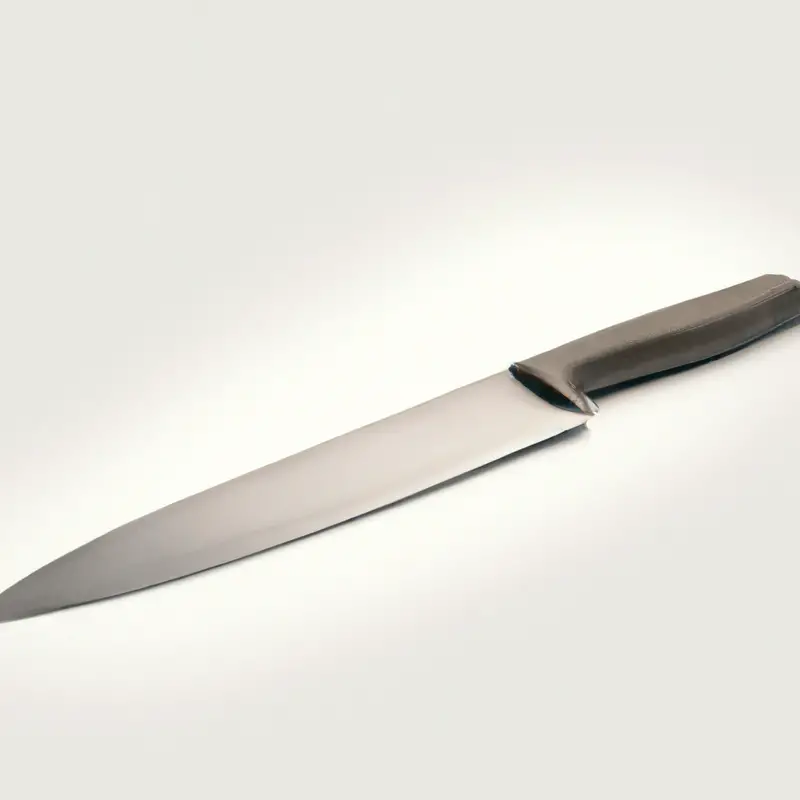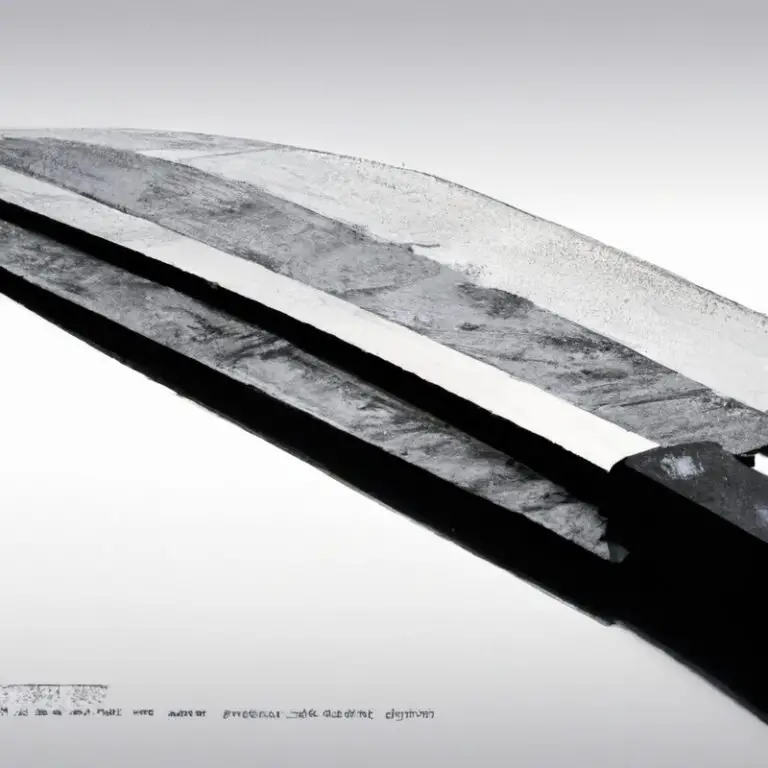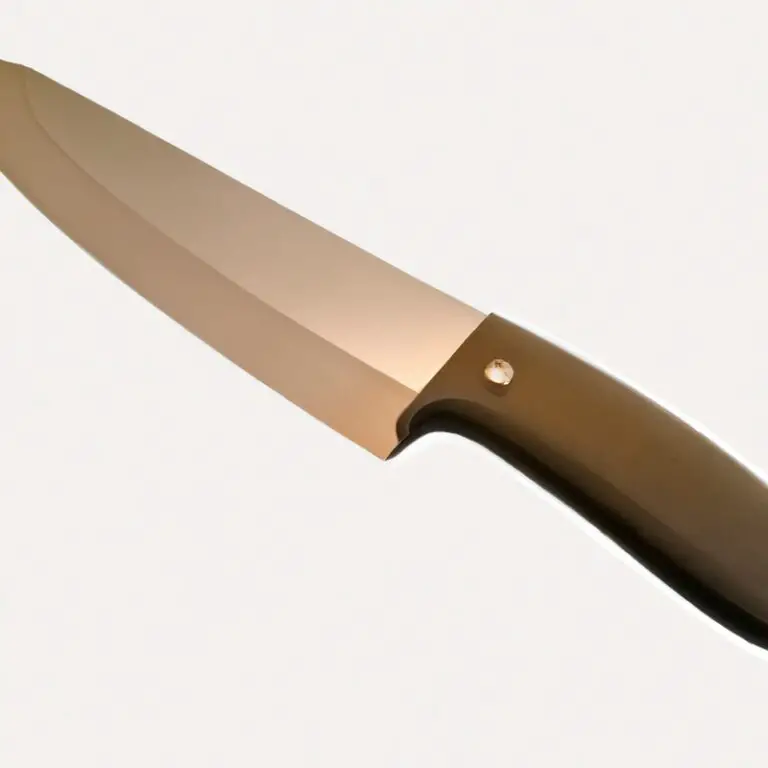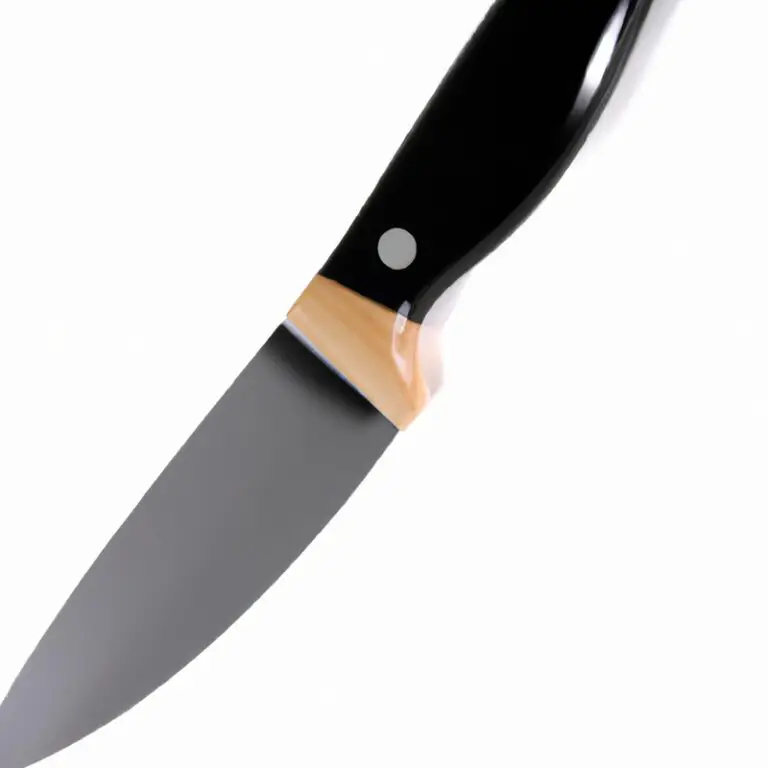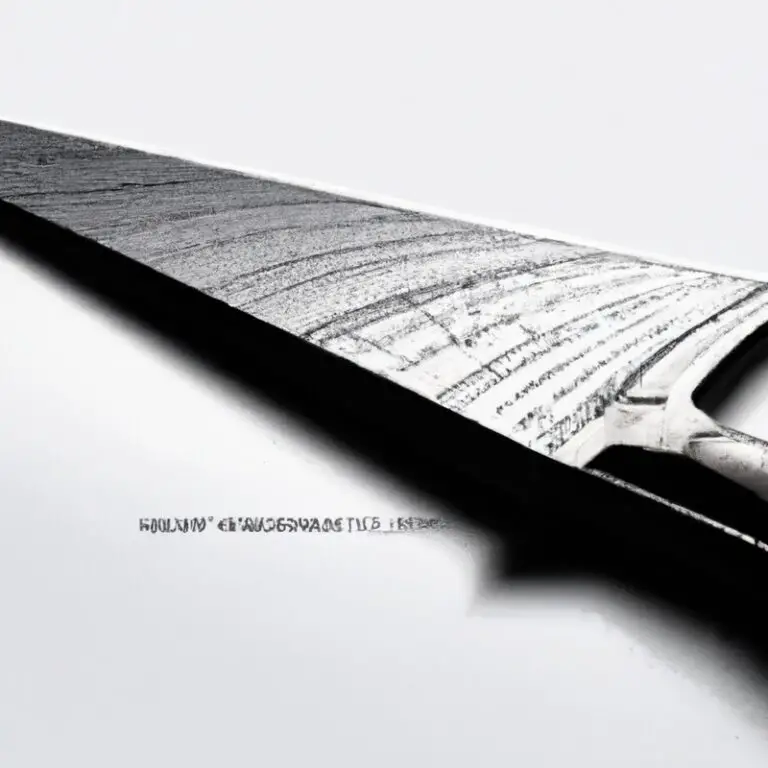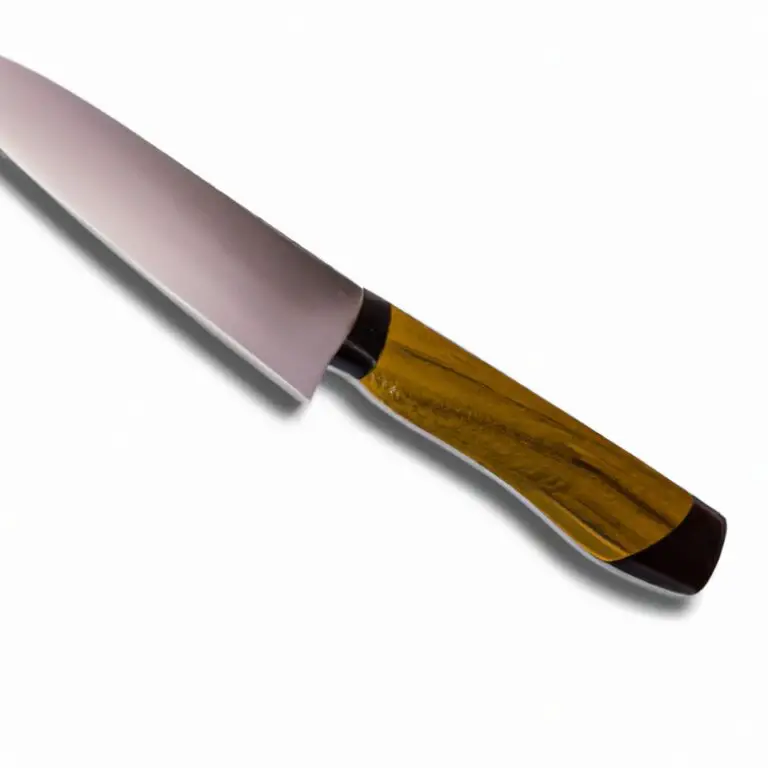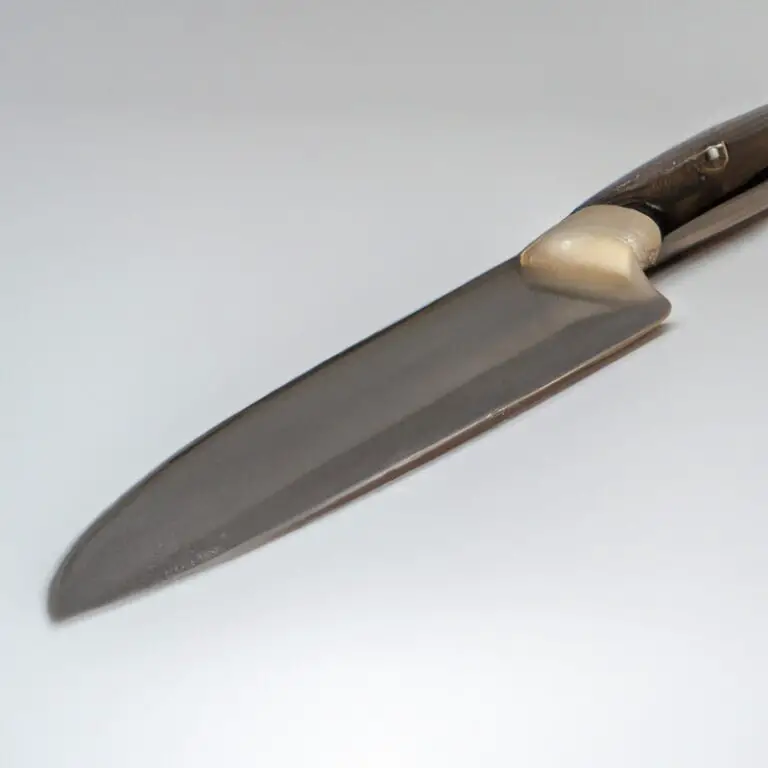How To Safely Remove Food Stuck On a Chef Knife? Quick Tips
Key Takeaways:
- Always use caution when removing food stuck on a chef knife to avoid injury.
- The safest way to remove food from a knife is to use a damp towel or sponge.
- Never use your fingers to remove food from a knife, as it can lead to cuts and injuries.
- Regularly clean and sharpen your chef knife to prevent food from sticking and ensure safe usage.
Do you struggle to remove stubborn food bits from your trusty chef knife? Not only does it look unappealing, but it can also be a safety hazard.
As a professional chef, I understand the importance of proper knife maintenance and the various tricks to keep your knife clean and sharp.
In this article, I will guide you through the common causes of food stuck on chef knives, the best removal methods based on blade type, step-by-step handwashing techniques, and more. Keep reading to learn how to keep your knife in top condition and prevent food from sticking in the future.
| Method | Description | Pros | Cons |
|---|---|---|---|
| Soap & Water | Wash the knife with soap and water. Use a sponge or dishcloth to scrub off any food particles stuck to the blade. | Effective and safe method. No risk of damaging the blade. | May need to repeat multiple times for stubborn food particles. |
| Baking Soda | Create a paste using baking soda and water. Apply the paste onto the blade and let it sit for a few minutes. Scrub with a sponge or dishcloth, then rinse with water. | Effective on many types of food particles. Helps remove odors. | May scratch the blade if too abrasive. Not effective on very stubborn food particles. |
| Vinegar | Place the knife blade in a bowl of vinegar. Soak for a few minutes, then rinse with water. | Effective on many types of food particles. Helps remove odors. | May tarnish the blade if used too frequently. Not effective on very stubborn food particles. |
| WD-40 | Spray a small amount of WD-40 on the blade, then wipe off with a paper towel or cloth. | Effective on very stubborn food particles. Helps prevent rust. | Not food-safe. May leave a residue on the blade. |
Understanding the Importance of Proper Knife Maintenance
Proper knife maintenance is crucial for ensuring the longevity and functionality of your knives. Neglecting to care for your knives can result in food buildup and damage, reducing their performance and lifespan.
Keeping your knives clean and dry after use is important to prevent rust and bacteria growth.
Regular honing and sharpening of the blade can improve its cutting ability and reduce the likelihood of food sticking. Proper storage also plays a significant role in maintaining the knife’s sharpness and preventing damage.
A well-maintained knife not only ensures safe and efficient cooking but also reflects the professionalism and expertise of the chef.
Common Causes of Food Stuck on Chef Knives
The most common causes of food getting stuck on chef knives include the type of food being cut, the blade’s dullness, and the cutting technique. Slicing soft, sticky foods like cheese, tomatoes, and citrus fruits can cause the blade to become coated with residue.
Along with this, overuse of blunt knives during food preparation can result in smashing, crushing, or tearing instead of slicing of food and leaving behind bits and pieces on the blade.
Finally, poor cutting techniques, such as using excessive force or insufficient wrist action, can cause food to stick to the knife. Being aware of these causes can help prevent food sticking on chef knives during food preparation and make it easier to remove any stuck debris.
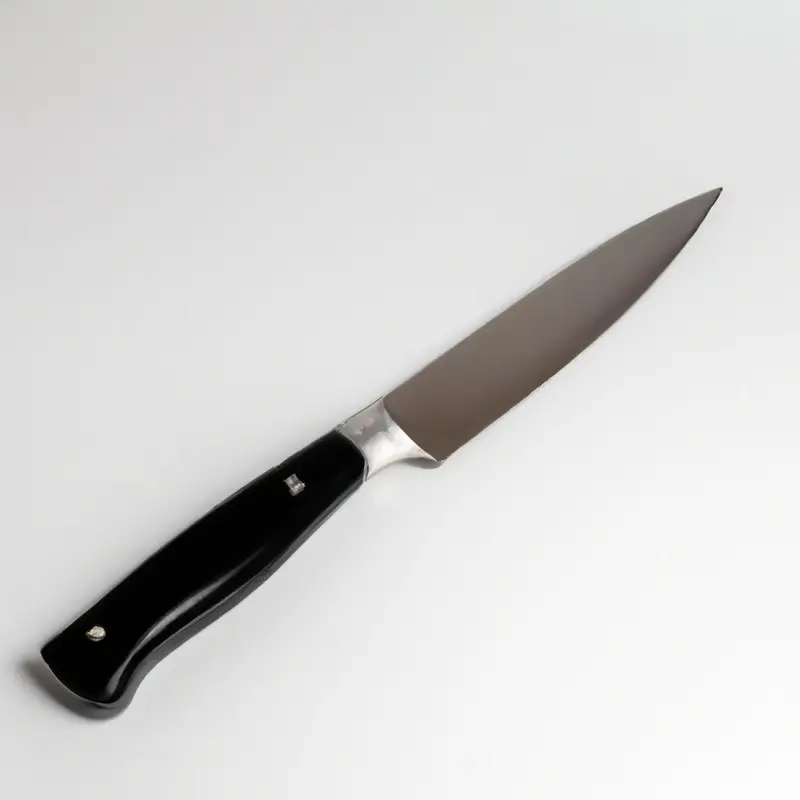
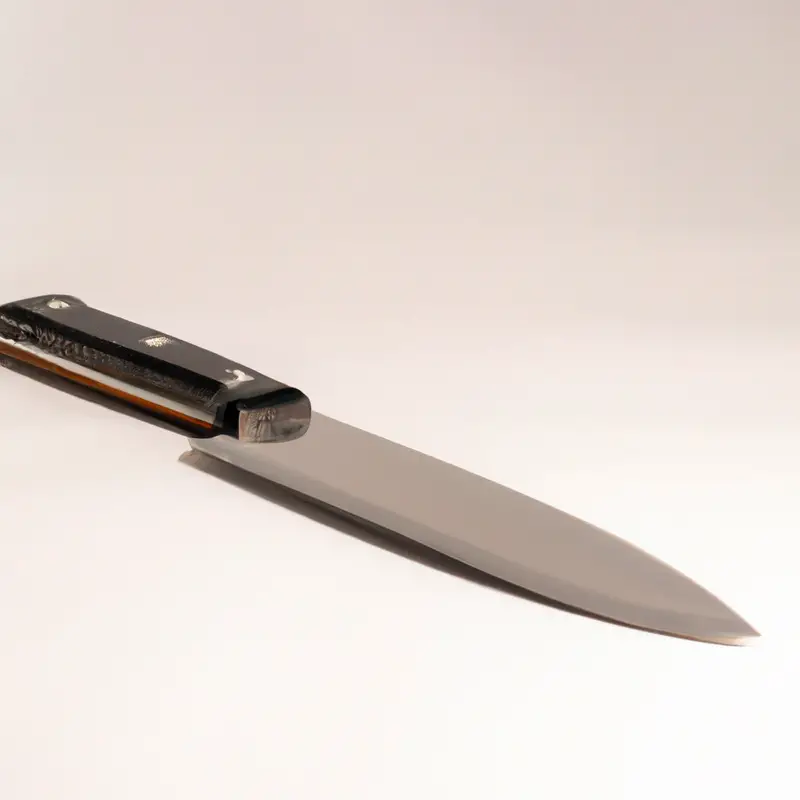
Choosing the Right Method for Food Removal Based on Blade Type
When it comes to choosing the right method for food removal based on blade type, there are a few things to consider. Soft blades, such as those made of carbon steel, can be damaged by abrasive tools or harsh chemicals.
On the other hand, hard blades, such as those made of stainless steel or ceramic, can withstand more aggressive cleaning methods.
For soft blades, gentle cleaning methods are recommended to avoid damaging the metal or causing rust. Use a soft sponge or cloth with warm water and mild soap to remove food particles.
Avoid using scouring pads or harsh chemicals on these types of blades.
Hard blades, on the other hand, can withstand more rigorous cleaning methods. A honing rod or sharpening stone can be used to remove stubborn debris.
Additionally, some household cleaning products, such as vinegar or baking soda, can be used to clean hard blades without causing damage.
It’s essential to choose the right method for your blade type to avoid any damage to the knife, and to ensure that it remains safe to use. Before trying any new cleaning method, make sure to research thoroughly and consult manufacturer recommendations.
Step-by-Step Guide for Handwashing Your Knife to Avoid Stuck-On Food
To properly wash your knife and avoid stuck-on food, follow these steps:
- Fill a sink or container with hot, soapy water.
- Carefully place the knife in the water, making sure not to touch the blade.
- Using a sponge or cloth, gently wipe the blade and handle, removing any visible debris or residue.
- Rinse the knife thoroughly under running water.
- Dry the knife immediately with a clean towel, paying special attention to the blade to prevent any water spots.
- Store the knife in a knife block or sheath to keep it safe and dry until the next use.
It’s important to never leave a knife soaking in water, as this can cause damage to the blade and handle. Additionally, avoid using a dishwasher to clean your knives, as the harsh detergents and high heat can cause damage and dull the blade.
By following these steps, you can ensure that your knife stays clean and free of stuck-on food.
How to Properly Dry Your Knife to Prevent Future Sticking
Properly drying your knife after washing it is important to prevent future sticking. Here are some tips to follow:
- Use a clean, dry towel or cloth to wipe your knife dry immediately after washing it.
- Always dry the blade and handle separately.
- If you leave your knife to air dry, ensure that it is stored in a way that allows air to flow around the blade and handle to avoid moisture build-up.
- Avoid using harsh detergents or abrasive sponges to clean your knife as they can damage the blade and promote rust.
- Never put your knife in the dishwasher, as the heat and detergents can cause corrosion and damage the blade.
By following these simple tips, you can help ensure that your knife remains clean, rust-free, and in good condition for use.
Tips for Using a Honing Rod to Remove Stubborn Debris
To remove stubborn debris from a knife, a honing rod is a valuable tool. Here are some tips on how to use it effectively:
- Choose the right honing rod for your knife. A honing rod should be at least as long as the blade you are honing.
- Use the proper angle. Hold the honing rod vertically, with the tip placed on a steady surface. Hold the knife against the rod with a 15 to 20-degree angle.
- Use light pressure. Glide the knife down the honing rod, applying light pressure. Repeat this process several times on each side of the blade.
- Use an alternating motion. Alternate honing each side of the blade to ensure even alignment.
- Clean the honing rod after use. Rinse the honing rod with warm, soapy water and dry it thoroughly before storing it.
By following these tips, you can use a honing rod to effectively remove stubborn debris from your knife, ensuring that it remains sharp and safe to use.
The Role of Oil in Knife Maintenance and Food Removal
Using oil is an effective way to maintain your knife and remove food that’s stuck on it. Applying oil on your knife blade prevents rust build-up and makes it easier to clean.
It also lubricates the blade surface, making it less susceptible to sticking.
When using oil, make sure to apply it thinly and evenly on the blade. You can use any type of oil, though food-grade mineral oil is the most recommended.
Avoid using vegetable oils as they can turn rancid over time and affect the taste of your food.
To apply oil, pour a small amount onto your knife and use a soft cloth to rub it into the blade. Make sure to cover the entire blade surface, including the handle and the area around the pivot.
Afterward, wipe off excess oil with a clean cloth.
Regular oiling will keep your knife in good condition and make it easier to remove food from the blade. However, be careful not to use too much oil as this can attract dust and dirt onto the blade.
Additionally, avoid soaking your knife in oil as this can damage the handle and affect its balance.
Remember, proper knife maintenance is essential for a safe and efficient cooking experience. Alongside oiling, it’s important to keep your knife clean and sharp, and to store it properly after use.
With these measures in place, you can ensure your chef knife stays in top condition, ready to take on any culinary challenge.
How to Use Commercial Knife Cleaners Effectively
When it comes to using commercial knife cleaners, it’s essential to follow the instructions on the label. First, choose a cleaner suitable for the type of knife you have and read the label carefully to ensure it’s safe to use on your blade.
Avoid using harsh chemicals, as they can damage the blade’s finish and compromise its sharpness.
To use commercial knife cleaners effectively, mix the solution according to the instructions and apply it to the blade with a soft cloth or sponge. Scrub the blade gently, making sure to remove any stubborn food particles.
Once you have cleaned the blade thoroughly, rinse it well with warm water and dry it immediately with a clean towel.
It’s essential to store your knife in a safe place after cleaning and drying it. If you’re using a knife block, make sure it’s clean and dry before placing your knife inside.
If you’re storing your knife in a drawer, use a protective sheath to keep it safe.
Overall, using commercial knife cleaners can be an effective way to clean and maintain your chef knife, but it’s important to use them correctly and choose a cleaner that’s safe for your blade.
When to Seek Professional Knife Maintenance Services
If you notice that your knife has chips, dents, or deep scratches on the blade, it’s recommended to seek professional knife maintenance services. Such damages can affect the performance of the chef knife, making it difficult to cut food effectively.
Additionally, if you have tried various methods to remove stuck-on food with no success, it’s best to take the knife to a professional.
They have the expertise and equipment to clean and sharpen the blade correctly, ensuring that it remains in top condition. It’s also recommended to have your knives professionally maintained regularly, at least once or twice a year, depending on how often you use them.
This will help to maintain their sharpness and improve their longevity.
Prevention Measures to Reduce the Risk of Food Sticking on Your Chef Knife
To prevent food from sticking to your chef knife, it is essential to practice proper knife maintenance and make sure the knife is sharp. Here are some other prevention measures you can take:
- Use a non-stick coating: Applying a non-stick coating to your knife blade can help prevent food from sticking.
- Use food release sprays: Using cooking sprays or oil with food release properties can help prevent food from sticking to the knife blade.
- Cut food on a proper surface: Cutting food on a flat and smooth cutting board or surface can prevent any debris or particles from sticking to the knife.
- Keep the blade dry: Drying your knife after each use can prevent moisture buildup, which can lead to sticking.
- Avoid high heat: Using a hot pan or griddle can cause food to stick to the knife, so it’s best to avoid high heat altogether.
By implementing these prevention measures, you can reduce the risk of food sticking to your chef knife and ensure a smooth and safe cutting experience.
Final Verdict
Properly maintaining your chef knife through regular cleaning and sharpening is crucial not only for its longevity but also for food safety. Knowing how to safely remove stuck-on food from your blade is essential to prevent damage and maintain its effectiveness.
From choosing the right method for your blade type to using commercial cleaners effectively, there are various ways to keep your knife in top condition.
By incorporating preventative measures such as maintaining a clean workstation and using a honing rod, you can reduce the risk of food sticking in the first place. Remember, investing time and effort into knife maintenance will not only save you money in the long run but also ensure the quality and safety of your food.
Keep your chef knife in top form, and let it be a trusted companion in the kitchen!

